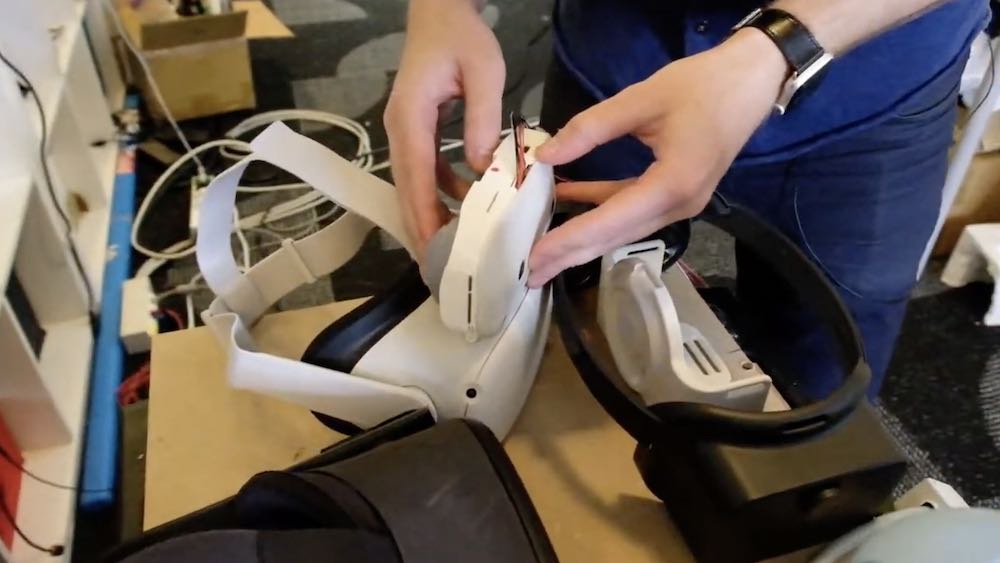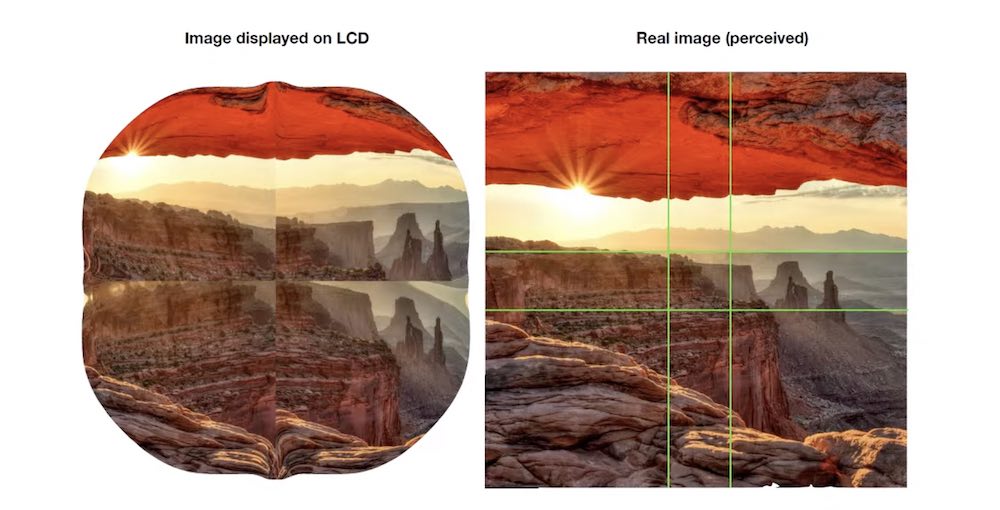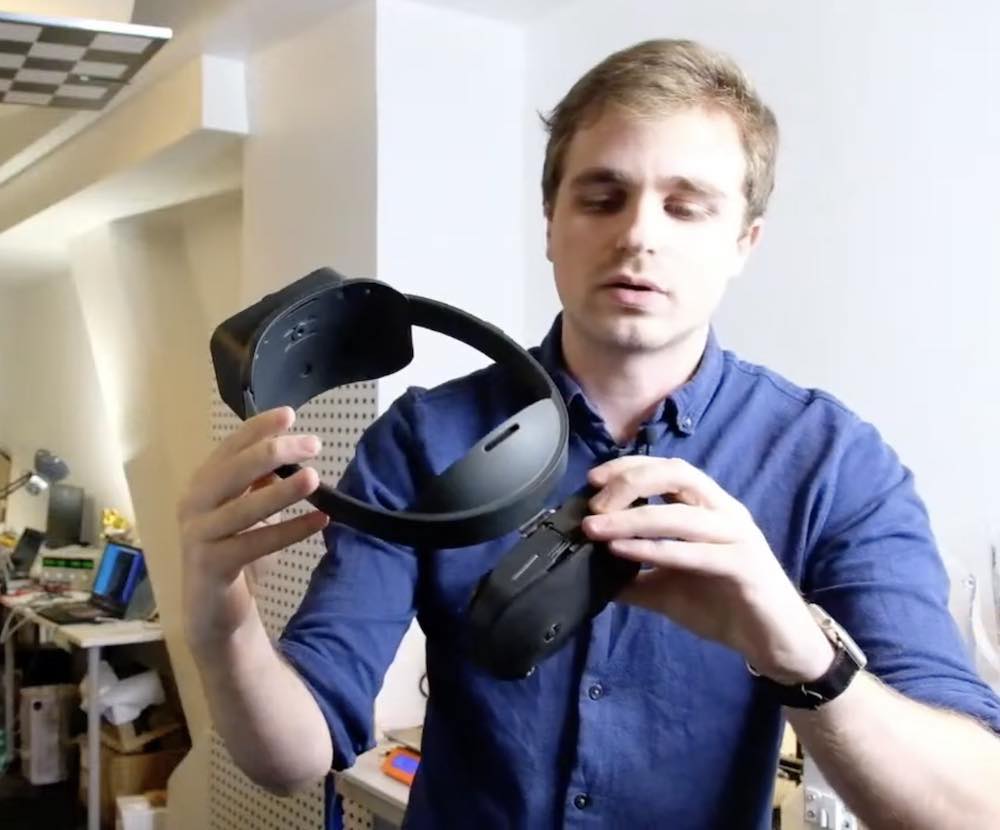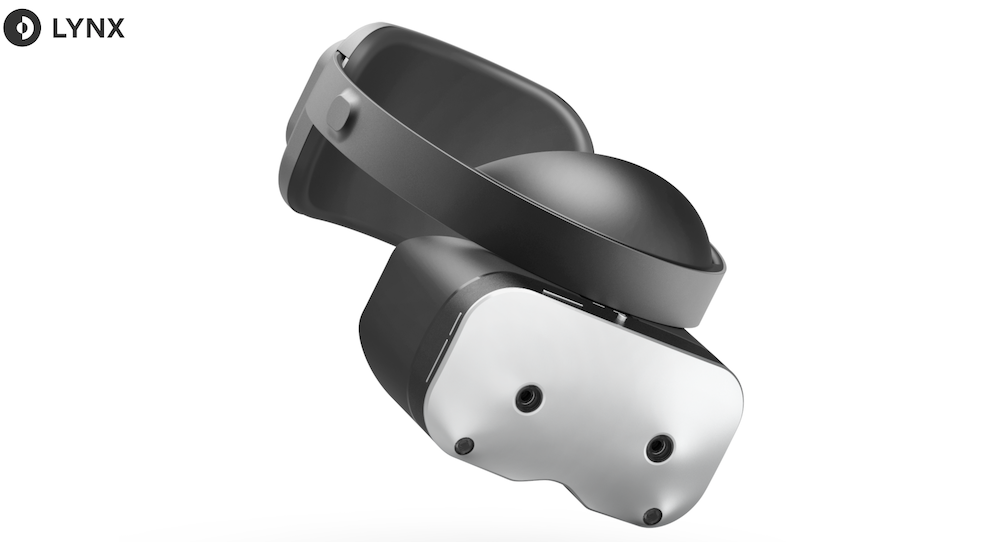Lynx R1 Mixed Reality Headset to Launch in December
In a YouTube meetup and Q&A this week, the French Mixed Reality startup Lynx gave the progress report for the redesign of its compact mixed reality tech device Lynx R1 which it has been working on and which was first announced in July. The device can handle both Virtual Reality and Augmented Reality. Lynx CEO Stan Larroque posted the latest progress on YouTube and announced a new launch window for the mixed reality headsets.
Larroque also revealed that the startup is contemplating making a teaser video that will allow people to experience the Lynx R1 ahead of its planned release before the end of the year.

The heart of the headsets is an optical module in which six cameras, two displays and Lynx’ special lenses are built. The latter allows for the extremely slim design.

Two cameras each are responsible for room and hand tracking while the two RGB cameras film the outside world. The video feed is streamed to the displays where they can be expanded to include Augmented Reality elements. The latency should be about 12 to 18 milliseconds.
For Virtual Reality uses, the module is expanded to include a face cushion which shields the user’s eyes from the outside world.

Pushing the XR2 to Its Limit
The displays from the manufacturer JDI have a resolution of 1,600 x 1,600 pixels and with a frame rate of 90Hz rendering in AR/VR. In AR the six cameras -RGB, eye tracking and monochrome- work together in parallel for very high usage of CPU, GPU and DSP.
The screens are powered by a powerful Qualcomm Snapdragon XR2 chip, the same chip used in the Oculus Quest 2. The chip is therefore being pushed to the limit and should run at full load in the Lynx headset.
Its battery, with a capacity of 8600mAh, is built into the back of the head-mount and takes up much space there but it will last four hours of intensive usage.
The primary input mode is hand tracking. The hardware is from Lynx while the hand-tracking startup Ultraleap will supply the software. One can also optionally purchase spatially recorded controllers, according to the CEO Stan Larroque.

Launch This Year
The magnets for the optical add-ons have been installed around the RGB cameras. Lynx wants to publish a CAD file that will enable engineers to design and print out the appropriate papers.
Lynx is currently working on delivering an Open Source launcher for VR and AR, sample apps, controller compatibility and an 8600mAh battery.
The startup will also publish the source code for the launcher and the sample apps on its website. The sample apps will also be open source and you will be ale to use and modify them to take your Lynx device to new heights.
The operating system is Android 10 and OpenXR support is planned for later. Lynx CEO has also promised that the use of its Mixed Reality tech glasses will not be linked to Facebook or any other account, a contentious issue that currently plagues Facebook which requires users to sign into its headset with their real Facebook accounts. Lynx is working with Ultraleaps for the hand-tracking functionality and with The Finch company for controller compatibility.
During the presentation, Larroque also addressed the issue of delays brought about by the pandemic admitting that the COVID-19 pandemic had affected the production schedules of its devices and triggering the delays. According to its July update, the first Lynx developer kits should have been delivered by September. The first 25 prototypes which will be shipped to the startup’s strategic customers and partners from next week should have been shipped by early October. The first batch of the redesigned Lynx device will be shipped to regular buyers from December 2020.
The headset is priced at $1,500 but according to Larroque, the price could still fall as Lynx is trying to do a price modification or price review. Lynx is currently negotiating with Taiwanese suppliers in a bid to cut down on the production costs and get a better deal for end users.
You can watch the full presentation below. Open it on YouTube.
https://virtualrealitytimes.com/2020/11/01/lynx-r1-mixed-reality-headset-to-launch-in-december/https://virtualrealitytimes.com/wp-content/uploads/2020/10/Lynx-Glasses-in-AR-Mode-600x498.jpghttps://virtualrealitytimes.com/wp-content/uploads/2020/10/Lynx-Glasses-in-AR-Mode-150x90.jpgAugmented RealityTechnologyIn a YouTube meetup and Q&A this week, the French Mixed Reality startup Lynx gave the progress report for the redesign of its compact mixed reality tech device Lynx R1 which it has been working on and which was first announced in July. The device can handle both Virtual...Sam OchanjiSam Ochanji[email protected]EditorVirtual Reality Times - Metaverse & VR
